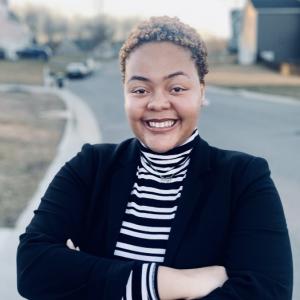An estimated 1.3 billion people globally live with a significant disability. With noncommunicable diseases on the rise and people living longer, this number is only expected to grow.
At the Online News Association conference earlier this year, experts discussed where reporting on people with disabilities falls short today, and how newsrooms can strive to be more inclusive.
Cara Reedy, director of the Disabled Journalists Association, Russell Midori, president of Military Veterans in Journalism, and Ryan Prior, a journalist and fellow at The Century Foundation, provided tips for reporters to better incorporate people with disabilities in their coverage.
Here are some key takeaways:
Make your newsroom more accessible
While efforts have been made to increase diversity and inclusion in newsrooms, the journalism industry still has a long way to go when it comes to accommodating the needs of journalists with disabilities. Although making your newsroom more accessible may seem costly, many of these additions aren’t that expensive, said Reedy.
“Most accommodations [for people with disabilities] cost $500 or less. Usually [when] you spend the $500, now the accommodation is available for everyone. It’s not a repeated cost,” she explained.
Being able to make accommodations for journalists and sources who have disabilities not only benefits them, but it also enables the organization to tell more inclusive stories that reach and incorporate larger audiences.
“As news organizations, we generally aim to seek the truth, right?” said Midori. “[Making] that accommodation [for journalists with disabilities] gets you closer to the truth because the role of diversity is not just [to be] something that is cool right now. It’s actually helping us tell our stories better.”
Be flexible
Some employees and sources’ needs may require you to adjust how you conduct your work. You should be understanding of this and try your best to accommodate them.
“Many people [with disabilities] will want to do interviews over email or text message because they’re more comfortable writing rather than talking directly [to you],” said Prior.
This can also entail asking your editor for an extension to write your article: it’s more important to tell these stories than to scrap them because they’re taking longer to complete.
“To ignore the story because you are on a tight deadline, what story are you actually telling?” said Reedy.
Everyone labels themselves differently
Across industries, there’s a ongoing debate over whether members of marginalized groups should be categorized by their identity first (eg. “autistic man”) or as a person first (eg. “a man with autism”).
Many journalists have been taught to lead with the person and follow with the identity. This isn’t how everyone chooses to label themselves, however.
“I used to say that I was a person with dwarfism. Now I say I’m a dwarf, because that’s my identity. That’s how I move through the world, and people come to this idea of identity and disability in different ways and at different times in their lives,” said Reedy.
When interviewing sources with disabilities, ask them how they would like to be identified. Even if you already know them, how they choose to label themselves may have changed. Be mindful that people may not consider a disability they have to be a part of their identity. They could be choosing not to mention it to avoid discrimination, violence, job loss or presumptions that they need help.
“Some people don’t identify as disabled, but that doesn’t mean that they’re not disabled,” said Reedy.
People with disabilities are experts, too
When Prior was working on his book “The Long Haul,” he noticed that the patients he interviewed about the long term effects of COVID-19 were the best sources on the topic.
“I wanted to reach out to the people who were the most knowledgeable. Frequently, my interviews with doctors and scientists were among the most frustrating,” he said. “Coming into it I truly was just trying to get the information. The patients had the information and the doctors didn’t.”
At first glance, interviewing a medical professional or researcher may seem like the only option for a story on a disability and its effects. However, someone who has that disability can also be a source, given their lived experience. They can make for a more engaging interview while also adding a human interest element to your story.
“The patients are the experts. The people with the lived experience, have either 10 times or maybe even 50 times more knowledge than medical experts,” said Prior.
How a system benefits people with disabilities determines its effectiveness
Disabilities play a role in many stories, but too often that connection is left out, overlooked or categorized as a niche issue. For example, people with disabilities live in poverty at more than twice the rate of people without disabilities. Many stories written about poverty don’t mention disabilities, however.
“We’re trying to get journalists to see that when [they] see disability it’s not not ‘oh, that just happened’ [or] ‘oh well, whatever,’” said Reedy. “[It’s] because poverty not only creates disability, [but] it exacerbates it. So why aren’t we talking about it more?”
Looking at impacts on people with disabilities can be a good launching point for any investigation, suggested Prior.
“If you want to do good investigative journalism, start with the disabled, because you can look at any system and the way it treats disabled people is a really good measure of the effectiveness of that system,” he said.
Photo by Elizabeth Woolner on Unsplash.


